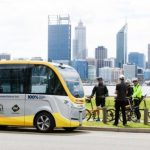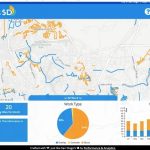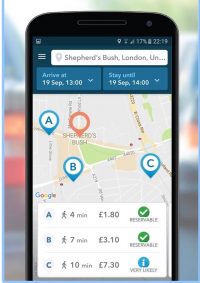Smart city transformation begins with tangible entry points
Smart city transformation begins with tangible entry points

Often lost amongst the smart cities media hype are clearly defined entry points that local leaders can target when beginning to transform their metropolis into a smart city.
Thankfully, Tech Republic recently interviewed several industry experts for their views on how urban leaders can begin the journey toward smart city-dom.
One key focus is to develop smart initiatives that not only solve urban challenges but get citizens in on the action too.
“Find a point that takes citizen interest first, but can impact many people in a city and get visibility and become a symbol of a smart city,” said TM Forum’s Carl Piva. “Ask, ‘What can I do to make my city more equitable, more inclusive or to simply create a dialogue with the people who live there?’”
A successful example of this is the city of Boston’s mobile app that enables citizens to report problems or needed repairs by sending their photograph of the issue to the city. Not only does this empower residents to participate in improving the city, but sparks citizen dialogues around trends and recurring needs.
Another early smart city strategy is for planners to highlight a solid return on investment (ROI) that a technology-driven project will generate.
A case in point is Los Angeles’ conversion of 215,000 streetlights to LED smart lights which generates $ 9 million in utility savings annually. That the lights will pay for themselves in six years provides clear ROI evidence to convince skeptical city stakeholders that future smart projects promise tangible benefits.
“That streetlight is everywhere in your city and it’s got power to it and you can do so many things with it, now and in the future, if you think big first,” said Smart Cities Council chairman Jesse Berst.
Harnessing the massive flows of data generated by smart cities is another entry point for urban transformation. Especially if that information is not only used to improve the city, but also for engaging the public through open data initiatives.
New tech means fewer 911 calls
The decision by Albuquerque, N.M.to make certain data openly available to citizens resulted in 422,000 fewer calls to 311. Berst says the power of open data not only cut costs but improved city interactions in other interesting ways.
“As a city, you save money on Freedom for Information requests, and you create this data repository that your departments can start using and your citizens can start using and your hackers and developers can start using to build great things,” he said.
Lastly, the ability for smart city innovations to tackle government silos is a critical selling point for transforming a city’s technology infrastructure.
“It’s very important to not build a siloed infrastructure,” said Cisco’s managing director of Smart+Connected Communities Munish Khetrapal. “The day you build a siloed infrastructure you’ve wasted 30% of the dollars taxpayers are spending.”
Smart city platforms are effective in breaking city staff out of vertical silos through interdepartmental data sharing. As well, the new technology fostering horizontal collaborations between unexpected city actors and the elimination of duplicated services.
The post Smart city transformation begins with tangible entry points appeared first on ReadWrite.
(61)














